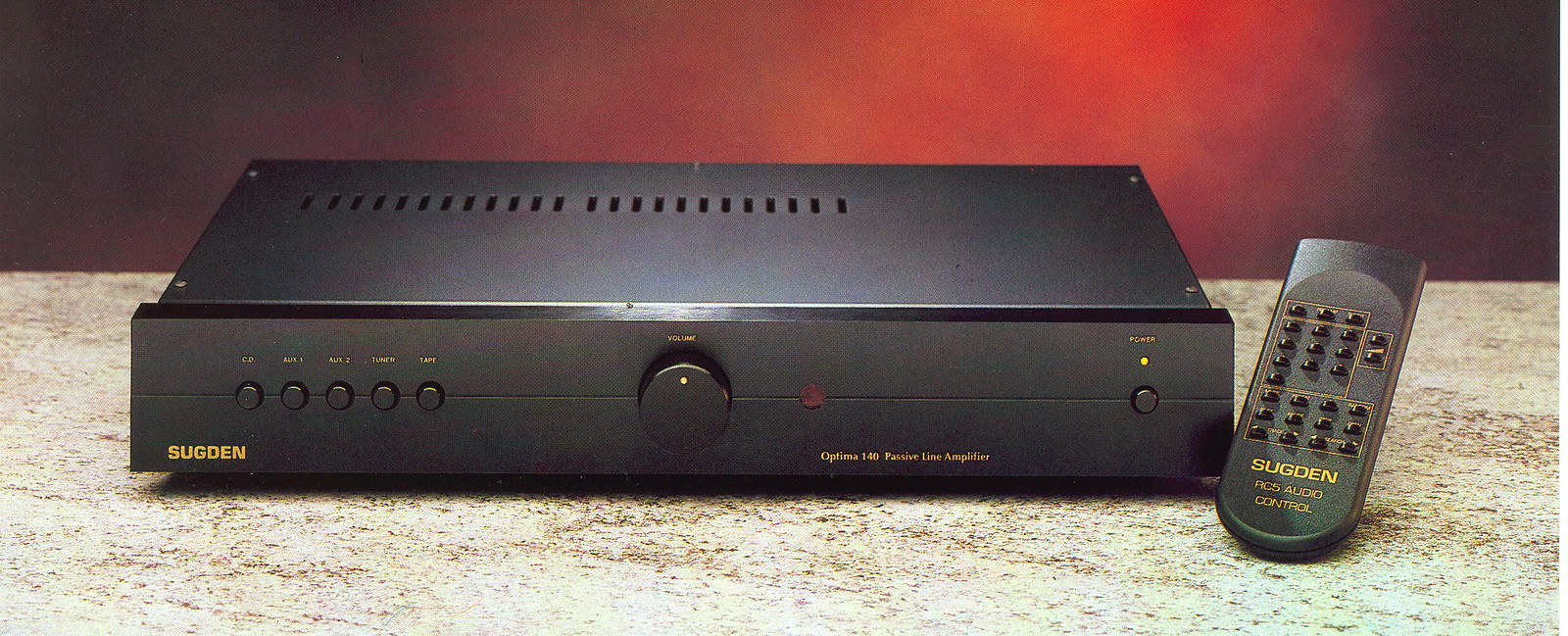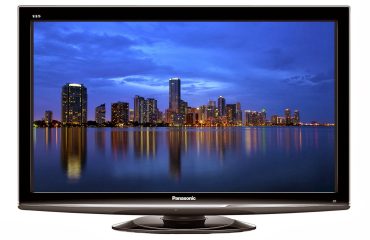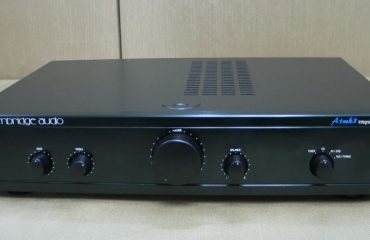Sugden Optima: a Small Leap for a Manufacturer…
There are those who think of Sugden integrated as the amplifiers that saved high fidelity. Others think of them as museum pieces. The Sugden Optima 140 will make both groups rethink their positions.
Once upon a time, hi-fi was Japanese. Americans had invented the genre, but too many US hi-fi companies had problems with engineering or cost control or both. The Land of the Rising Sun took over, with brand names destined to become world famous: Sony, Pioneer, Kenwood, etc. Japanese hi-fi equipment, like Japanese cars and cameras, worked better and cost less.
Yes, but…
The hegemony of Far East audio gave rise to a reaction that would eventually be called high end audio. A few manufacturers, several of them British, survived the onslaught, because their products, though often unattractive and seemingly overpriced, sounded better. If you set up proper listening facilities, as high end stores would, you could hear that a Sugden amplifier sounded better than a Sanyo.
A what amplifier?
Sugden was not then a household name, and it still is not today, but then neither is that of high end hi-fi. But in audiophile circles, there are those who still claim that “the good little British amplifier” saved hi-fi from the dark forces of homogenization. And if you ask those who were around back then what they mean by “the good little British amplifier,” a lot of them will mention Sugden.
Not that Sugden has been content to be mentioned in that context. For some years it has been working on true high end gear, and one of its preamplifiers, the Au-51c, has long been in our reference system. In the meantime, the A-48 integrated amplifier, one of those legendary models, has been evolving along. The last version, the A-48B (shown on the facing page with its successor) still sounds pretty fair. It has a velvety, soft sound that is a relief after you’ve sampled some of the “crisp” products from you-know-where. Still, we have no illusions about it. Most of its virtues have to be expressed as negatives (it isn’t aggressive, it isn’t boomy, etc.), but some newer amplifiers have long been outperforming it.
Meet Sugden’s own newer amplifier.
In its newest incarnation, the A-48 had taken on the sleek look of some much newer Sugden components, with gee-whiz horizontal radiator fins on the sides. That has been abandoned in the new Optima 140 (and its lower-powered sibling, the Optima 80). The styling is conservative to say the least, though as we shall see the sound is not. The new amp costs exactly what the old one did, and its feature list includes both an addition and a loss. The addition is a remote control. It affects only the amplifier’s volume control (a small motor turns the potentiometer). Other buttons can control your CD player, providing it is compatible with Philips commands. Curiously, if you prefer to use someone else’s remote control (which is unlikely to recognize Sugden codes) the amp itself can be reset to change its code. The loss is the phono stage. You can, of course, add an outboard phono stage, and indeed Sugden will be introducing its own. especially designed for the Optima.
As always with Sugden, the front panel is simplicity itself, with buttons for power, selecting one of four inputs, and activating the tape loop. The only other control is a volume button. At the rear, only the input jacks for CD and one other input are gold-flashed. The binding posts, from J.A. Michell, are very nice.
For this review we had access to both amplifiers, old and new. Since the new one has no provisions for a turntable, we decided against using the phono section of our expensive reference preamp (which would have given the Optima an advantage over the competition), and we did the entire test with CD. Fortunately, our current reference player (a Sugden/Counterpoint hybrid) kept the session quite pleasant, thank you.
We began with the marvelous choral piece There’s a Wideness in God’s Mercy, from Now the Green Blade Riseth (Proprius PRCD9093). It was pleasant enough with the A-48B, its musical values largely intact. The sopranos weren’t shrill, as they often are with second-rate equipment. A lot of the bottom end was missing, however, and the voices tended to bleed together into an undifferentiated mass. The counterpoint (no pun intended) was harder to follow. The spaciousness of this astonishing recording was reduced to no more than would fit in a shoe box.
Then we substituted the new Sugden.
We laughed out loud, so evident was the difference. This is one dynamic amplifier, in contrast to all previous Sugdens, and the massed voices burst from our speakers. The weight of the baritones and the organ was back (lesson: a power supply doesn’t have to look big to sound big). Reine had the impression that the Optima was following behind the A-48, picking up everything it dropped. Vocal crescendos were just great, and the flute solo was gorgeous. To be sure, there was a reduction in depth (compared to our reference, not the A-48), and we had to turn down the volume to keep the sopranos from sounding hard. This isn’t an amplifier than can match inefficient loudspeakers.
Next we tried Moonglow, a selection on From the Age of Swing (Reference Recordings RR-59), which at its best is a study in contrasts of instrumental timbres, and at its worst dissolves into a boring, uniform mass. The A-48 performed adequately, never sounding shrill or overly bright, but nor did it make us get up and dance. The brass instruments, which are the heart of this particular piece, were hard to tell apart. Dick Hyman’s piano work seemed to recede into a fog bank. Still, everything wasn’t ruined. The melody still worked, and nothing was really missing. “I just have the impression,” said Albert, “that someone turned down the lights.” The lights came back up with the Optima. The flugelhorn and the trombone were lovely, the piano was back, the rhythm was infectious, and all the musical elements rejoined together. We were reminded again, however, that this Sugden doesn’t like to be pushed. The brass quickly became hard when we got too heavy-handed with the volume control.
Which is easy to do, let us add, because as soon as you crack the volume open you are playing very loud. We ran the control around the 9 o’clock position much of the time. That means the Optima has far too much gain. A mistake.
Well, why not really wring it out? For the purpose we turned to Frederick Fennell, and Tico Tico, from his Beachcombers album (Reference Recordings RR-62CD). The A-48 did better than we expected with this brass-heavy mass of instruments. But the Optima was incomparably better, full of life and fire.
How well would it do with the opposite extreme, a piano trio as light as a spider’s web blowing in the wind? We turned to the wonderful Elegia from Arensky’s Piano Trio No. 1 (Dorian DOR-90146), whose charms can evaporate like the dew on the hottest day of the year. The A-48 reproduced all three instruments of the Rembrandt Trio, but the magical link between them was broken. The back-and-forth chat between violin and cello didn’t work, and the piano seemed to be playing by itself. Albert asked for more volume. “It doesn’t help,” he said sadly. “Everything’s there, but it’s all so dull.” It was a little more riveting with the Optima. The two string instruments were well reproduced. Albert especially noted a passage in which the violin is playing with a mute. “Even with the mute in place,” he said, “you should hear the resonance of the violin body. The A-48 loses that.” Still, despite the Optima’s convincing bottom end, the cello lost a bit of its richness, and Gerard found his mind wandering.
We ended the session with a pop song, recorded in a multitrack studio, Barbra Streisand’s As If We Never Said Goodbye from Back to Broadway (CBS CK 44189). This is a difficult recording, with enough dynamic range to blow fuses, and we feared the old A-48 would mess it up. It coped quite well. It never got strident — it never does — but the dynamics were good enough to give Streisand room for her trademark crescendos. A bit of distortion spoiled the peaks, and the light bottom end made her seem smaller, not her usual larger-than-life self. The Optima did far better, however, as we could tell even from the orchestral introduction. There was a palpable sense of space, and the solidity of the lower notes anchored the whole song to bedrock. All the instruments of the good-sized orchestra were present and accounted for. Was Streisand’s voice harder than before? Barely, because both amplifiers have limited power, but the fullness of the sound gave the Optima the impression of more power. And on an emotional level this fine song, from Andrew Lloyd Weber’s Sunset Boulevard, worked incomparably better.
We didn’t bother doing instrument tests on the older A-48, but we did run the Optima through the test bench. We suspect our sample wasn’t quite aligned properly. It delivered 50.5 watts through most of the audible range (a touch less below 50 Hz), but above that it clipped off just one peak from the waveform. A perfectly-aligned transistor amplifier will always clip if you turn it up loud enough, but the clipping should be symmetrical. Low-level performance, on the other hand, was very good. There was a little more background noise than with most other amplifiers, but even when we went down to the noise, there was no appreciable distortion.
Crosstalk between inputs was a reasonable -60 dB, and between any input and the tape loop (where it’s really critical) it was an even better -65 dB.
This is some amplifier. The gradual rise in the British pound keeps it (and the older A-48B) from qualifying as a true entry-level amp, but its performance make its price look like money well invested. It deserves a place on your shopping list, and you shouldn’t be surprised if it ends up following you home. If an A-48B tries to follow you home instead, shoo it away.
-
- Price: $1450 (in Canada)
- Dimensions: 42 x 33 x 7.3 cm
- Warranty: 3 years transferable
- Most liked: Dynamic, breathing sound
- Least liked: Occasional hardness when the volume rises.
CROSSTALK
For those of you familiar with the discreet sound of the Sugden A-48, get ready for some fireworks!
I liked the liveliness of this integrated amp. Where the A-48 is laid back, this one is restless, eager to deliver. It lends the music a certain contrast which seems to increase depth, but what really appealed to me was the improved weight and rhythm of the music.
I found voices generally harder and brighter compared with the reference and the A-48, yet strangely strings were spared. The moving Arensky trio was particularly convincing, full of subtle detail and nuances.
If you don’t need a phono stage (poor you!), this integrated amp should be a serious entry-level contender.
–Albert Simon
In announcing its new Optima, Sugden promised an amplifier that would be an improvement over the A-48. So don’t be surprised if that’s what you get. And it’s some improvement!
The attacks have lots of bite, the rhythm is infectious, there’s lots of detail, the spaciousness lets you forget the confines of the studio, the image is magnificent. It lives!
In the Streisand song, the orchestra, anorexic with the older amplifier, returned in fill force. In Tico Tico the instruments were swept away in a torrid rhythm, and I followed. For all of those qualities, I’m prepared to accept a touch of hardness every now and then.
–Reine Lessard
Am I a Sugden fan? Yes. Do I expect Santa Claus to come down the chimney? Only once a year.
Well, hello Santa!
What a pleasant surprise this amplifier is. One generally thinks of British companies as “conservative,” accepting change slowly, cautiously, and if that’s true then the Optima must have been a long time in the brewing. And now, like a top grade single malt Scotch…here it finally is! (Sorry about the mixed beer/spirits metaphor.)
This is a really good integrated amplifier, not as good as the much more expensive Copland and YBA, to be sure, but a contender against virtually anything in its category. Applause is well merited. Sugden just may get to save hi-fi all over again.
–Gerard Rejskind






